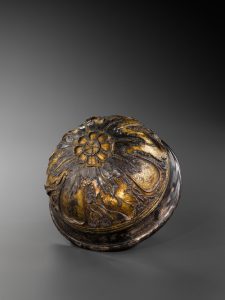The Majesty of Gstaad
From February 20-25 Phoenix Ancient Art will host a unique exhibition that we organize each year at the Gstaad Palace. This year’s exhibition is entitled Treasury: Wonders of Ancient Jewellery and Silverware and it will include two parts. First, we will have on display gold and silver masterpieces that are not to be missed. In addition, for the first time, we will have wearable jewellery that participants can try on and purchase for their own enjoyment.
This is our third year organizing the event. In 2015, we hosted the Alexander the Great exhibition, and last year we were honored to bring Mnemosyne: de Chirico & Antiquity to this location. Certainly, few settings are more majestic than The Gstaad Palace in February for such an exhibition.
And few types of antiques are as compelling as jewellery. Jewellery has dazzled and fascinated people from the prehistoric period to today. In antiquity, jewellery and silverware were made of gold, silver and other precious materials and were used to enhance the beauty of both men and women. They also conveyed a rank or status of the wearer. Collecting jewellery and silverware dates back as far as the 1st century A.D. when wealthy Romans would collect Greek works of art; then, during the Renaissance more collections were made in Italy, France and Western Europe. During the 18th and 19th century, more glorious jewellery and silverware were uncovered from Egypt’s royal tombs and throughout Italy.
Many private collections and public institutions today include ancient jewellery and silverware among their most precious possessions. This includes Peter the Great of Russia, the Borgia and Fornese families, Sir William Hamilton, the British Museum and the Musee du Louvre in Paris.

Bowl with Acanthus Leaves and Animals: Phoenix Ancient Art
During the twentieth century, there were quite a few important exhibitions of ancient jewellery and silverware on display around the world. The first show was staged in Berlin in 1932. In 1994 and 1995, the exhibition Greek Gold: Jewelry of the Classical World was on view at the British Museum and the Metropolitan Museum.
In addition to the jewellery we will have on display, we are also excited about the tableware and silverware pieces. One such piece, for instance, is the Bowl with Acanthus Leaves and Animals from the Hellenistic period in the late 3rd-2nd century B.C. This vessel, cast in a mold, has decorations and additions that were cold-worked after casting. Bowls of this sort were actually drinking vessels and were part of what the Romans would call the argentum potorium. They were dinnerware that was used only for the fanciest of banquets. Bowls of this sort were probably also used to make libations.
As we bring ancient jewellery and table adornments to this elegant hotel next week, we are able to imbue these pieces with new life and enthusiasm. We will begin on February 20 at 7pm with a cocktail reception (using regular stemware and not our antiques!) and we look forward to sharing in the moment with all of you.